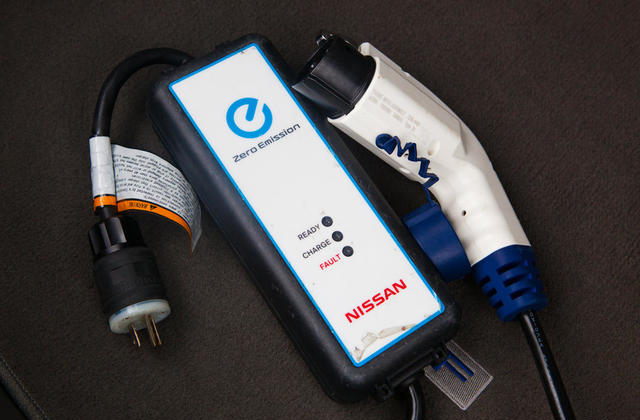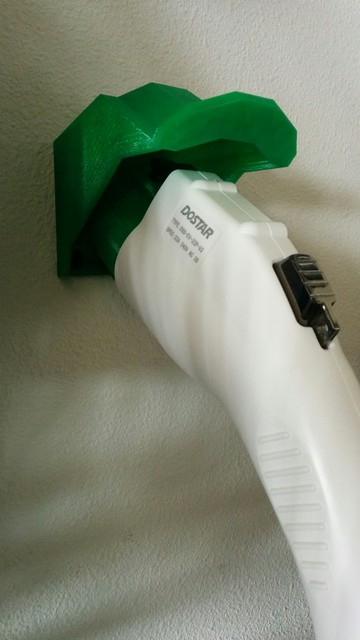Needing a new car, and wanting to never purchase another gas-fuelled motor, I bought a Nissan LEAF. (Trivia: LEAF appears to be a backronym for “Leading, Environmentally friendly, Affordable, Family car”.)

This vehicle has effectively a 22kWh battery and goes maybe 80 miles on a charge, which is more than enough for running errands.
The 15-Amp (“Level 1”) EVSE (Electric Vehicle Supply Equipment) that comes with the LEAF plugs into a standard wall socket. It tells the car’s charger to draw only 12A, so it doesn’t pop the house’s circuit. This will fully charge the batteries in about 20 hours, which is not sufficient for daily use.

The thing on the end that plugs into the LEAF is the J1772 connector. You’ll note it is not just an extension cord, even though it feeds the car AC power. The EVSE communicates with the vehicle to negotiate a charging current. Then the LEAF’s on-board charger takes the AC the EVSE makes available, converts it to DC, and stores it in the batteries. (My model LEAF also has a second plug for DC fast charging, which uses an entirely different connector: CHAdeMO.)
Most folks with an Electric Vehicle end up installing a “Home Charger”. (Though calling it a “charger” is a misnomer since, as mentioned, the charger is in the car.) This is actually a “Level 2” wall-mounted EVSE, which uses a dedicated high-amperage circuit. Like the Level 1, it has communication logic to do the protocol negotiation with the vehicle. However, the price of Level 2 EVSEs is crazy high (low-end $1000, high-end $3000), and that doesn’t even include the cost of getting the dedicated circuit run by an electrician.
To make matters worse, none of the standard EVSEs are Open Source, and only the high-end ones have remote access, etc. Luckily, I am hardly the first person to notice this, and since I’m so “late” to the EV world, there are several Open projects for building one’s own EVSE.
I went with OpenEVSE, since I can build it (so I understand all the components in the system), and I can change/improve the firmware (like adding a wifi board). Under Ubuntu, I was up and running after installing the arduino and avrdude packages.
Now I can charge from empty in under 8 hours, since the 30A unit charges at 24A nominal.

While I was at it, I 3D printed a socket to hold the J1772 plug when it’s not in the car.

© 2014 – 2015, Kees Cook. This work is licensed under a Creative Commons Attribution-ShareAlike 4.0 License.